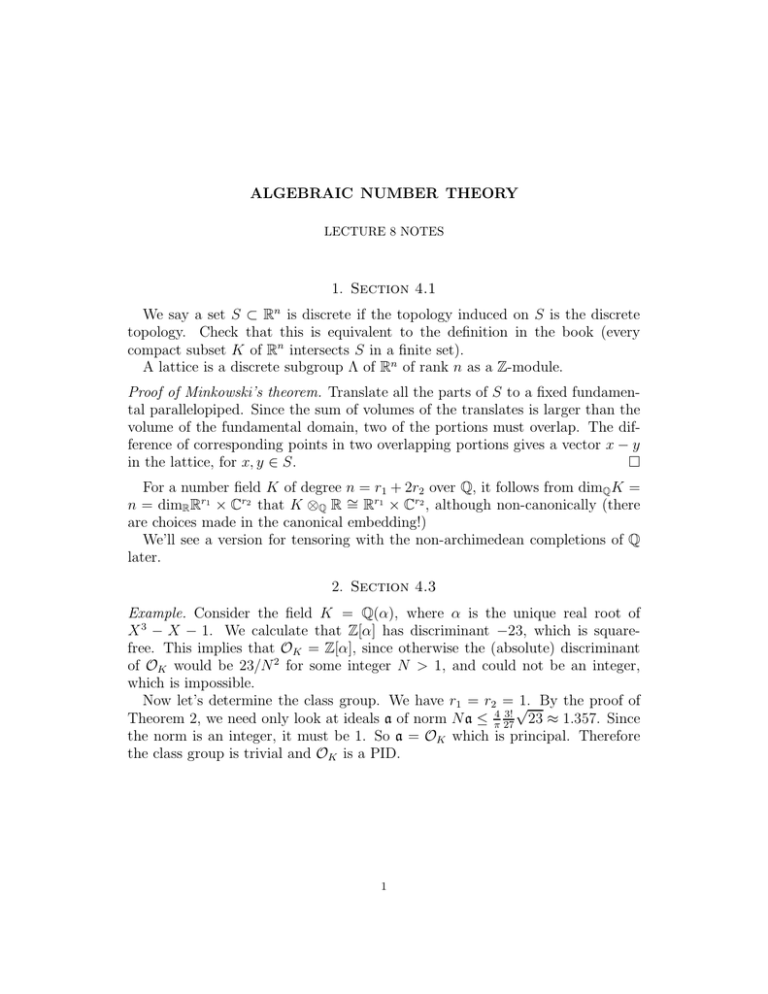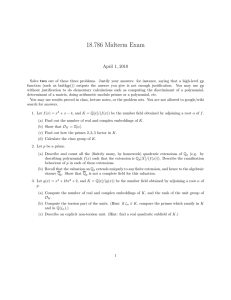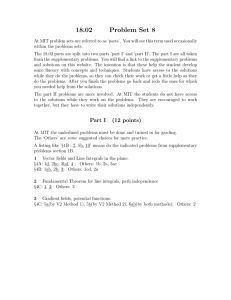ALGEBRAIC NUMBER THEORY 1. Section 4.1
advertisement

ALGEBRAIC NUMBER THEORY LECTURE 8 NOTES 1. Section 4.1 We say a set S ⊂ Rn is discrete if the topology induced on S is the discrete topology. Check that this is equivalent to the definition in the book (every compact subset K of Rn intersects S in a finite set). A lattice is a discrete subgroup Λ of Rn of rank n as a Z-module. Proof of Minkowski’s theorem. Translate all the parts of S to a fixed fundamen­ tal parallelopiped. Since the sum of volumes of the translates is larger than the volume of the fundamental domain, two of the portions must overlap. The dif­ ference of corresponding points in two overlapping portions gives a vector x − y in the lattice, for x, y ∈ S. � For a number field K of degree n = r1 + 2r2 over Q, it follows from dimQ K = n = dimR Rr1 × Cr2 that K ⊗Q R ∼ = Rr1 × Cr2 , although non-canonically (there are choices made in the canonical embedding!) We’ll see a version for tensoring with the non-archimedean completions of Q later. 2. Section 4.3 Example. Consider the field K = Q(α), where α is the unique real root of X 3 − X − 1. We calculate that Z[α] has discriminant −23, which is squarefree. This implies that OK = Z[α], since otherwise the (absolute) discriminant of OK would be 23/N 2 for some integer N > 1, and could not be an integer, which is impossible. Now let’s determine the class group. We have r1 = r2 = √ 1. By the proof of 4 3! Theorem 2, we need only look at ideals a of norm Na ≤ π 27 23 ≈ 1.357. Since the norm is an integer, it must be 1. So a = OK which is principal. Therefore the class group is trivial and OK is a PID. 1 MIT OpenCourseWare http://ocw.mit.edu 18.786 Topics in Algebraic Number Theory Spring 2010 For information about citing these materials or our Terms of Use, visit: http://ocw.mit.edu/terms.







